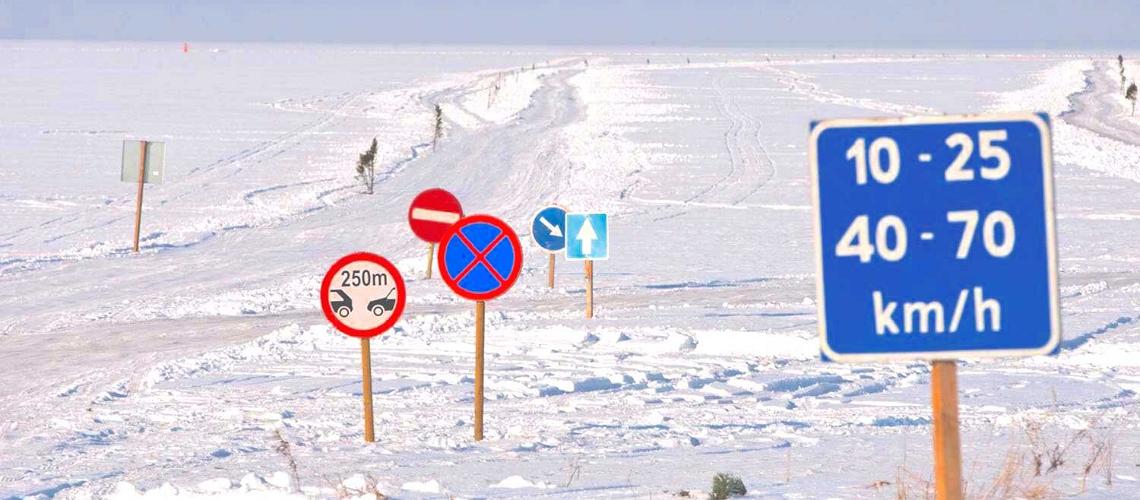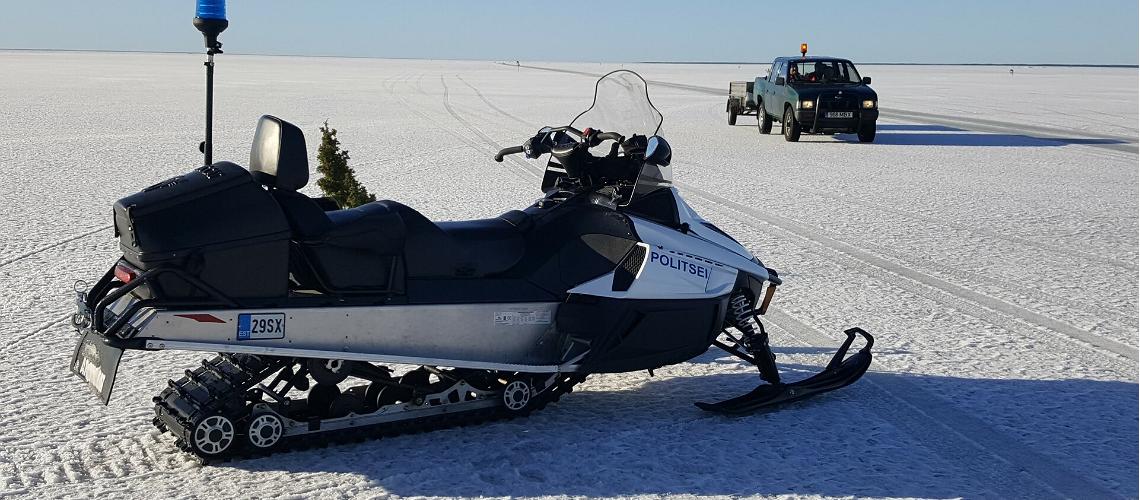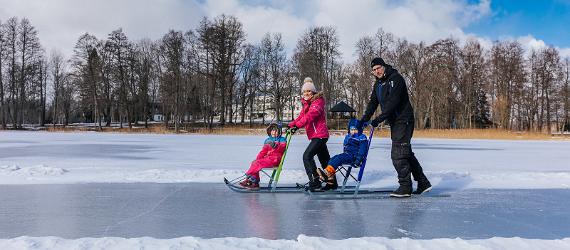Driving on an ice road in Estonia is not for the faint of heart. Strict rules must be followed, and weather conditions must be ideal. The ice must be at least 20 cm thick to hold the weight of a car. Check official ice road openings with the Estonian Transport Administration before heading out for a thrilling wintertime adventure!
Where to find ice roads in Estonia
When the winter gets cold enough to create thick ice, all the official ice roads in Estonia can be opened. Together, these provide a total of more than 80 km of ice roads, though the exact length changes depending on the route over the ice.
Estonia has seven official ice roads connecting the mainland and various islands:
- Hiiumaa and the mainland (25 km)
- Hiiumaa and Saaremaa (15 km)
- Vormsi and the mainland (12 km)
- Kihnu and the mainland (15 km)
- Haapsalu and Noarootsi (3 km)
- Laaksaar and Piirissaar (8 km)
The main goal of creating ice roads is not to provide a tourist attraction but to make the lives of locals easier. However, what may seem normal to Estonians may be new and exciting, and even shocking, to someone from a different cultural space. And ice roads provide unforgettable travel experiences.
- The Haapsalu–Noarootsi ice road provides a great opportunity to learn about what it's like to travel on an ice road, as it's a great way to start exploring the Noarootsi peninsula.
- The Rohuküla–Vormsi ice road is best for advanced ice road drivers. This road leads to the wintery island of Vormsi.
- The ice road of Hiiumaa is best for those who are ready for a longer journey – 25 km of ice road is quite an experience! This is the longest ice road currently used in Europe.
- The Saaremaa–Hiiumaa ice road is the fastest way to travel between Estonia's two largest islands.
- The Kihnu ice road (approx. 15 km) is also best suited for advanced ice road drivers. It leads to the island of Kihnu, whose cultural traditions are on the UNESCO List of Intangible Cultural Heritage.
Records on Estonian ice roads
The longest known ice road originating from Estonia was between Saaremaa and Lübeck in 1323. The longest ice road in Europe is the one between Hiiumaa and Rohuküla on the mainland (24–27 km depending on ice conditions and the exact route).
However, the largest number of cars has travelled via the Haapsalu–Noarootsi ice road. This happened in 2013 when the road was opened for 77 days and used by 19,979 vehicles. This ice road boasts the highest efficiency factor when considering the journey's length, as it enables a route 10 km shorter than the route over land.
As the climate changes, ice roads in Estonia will become increasingly rare. In 2021, the only ice road to open was the road to Pirisaar in Lake Peipsi. In 2022, no ice roads were opened. The last year that saw all seven of Estonia's ice roads open simultaneously was 2011, when 55,663 vehicles travelled across Estonian ice roads.
How to stay safe when driving on ice
Ice roads are open for travellers during daylight hours only. The recommended speed is 25 km/h or 40-70 km/h. When driving at a speed of 25-40 km/h, the vehicle may cause a resonance wave that could break the ice.
Ice roads are the only roads on which one should keep their safety belts unfastened. It is important to ensure that all vehicle doors can be opened easily. You should never stop your car on an ice road; it is best to keep moving.
Ice that has formed only recently is thought of as the strongest ice. The ice is strong enough to carry a human when it is 5–8 cm thick; for an ice road, it has to be at least 20 cm thick. The maximum gross vehicle weight allowed on an ice road is 2.5 tonnes.
The distance between cars travelling on an ice road should be at least 250 meters to prevent excessive loads on the ice and potential rear-ending. There have been no serious traffic accidents, nor have any cars sunk through the ice on Estonian ice roads.























